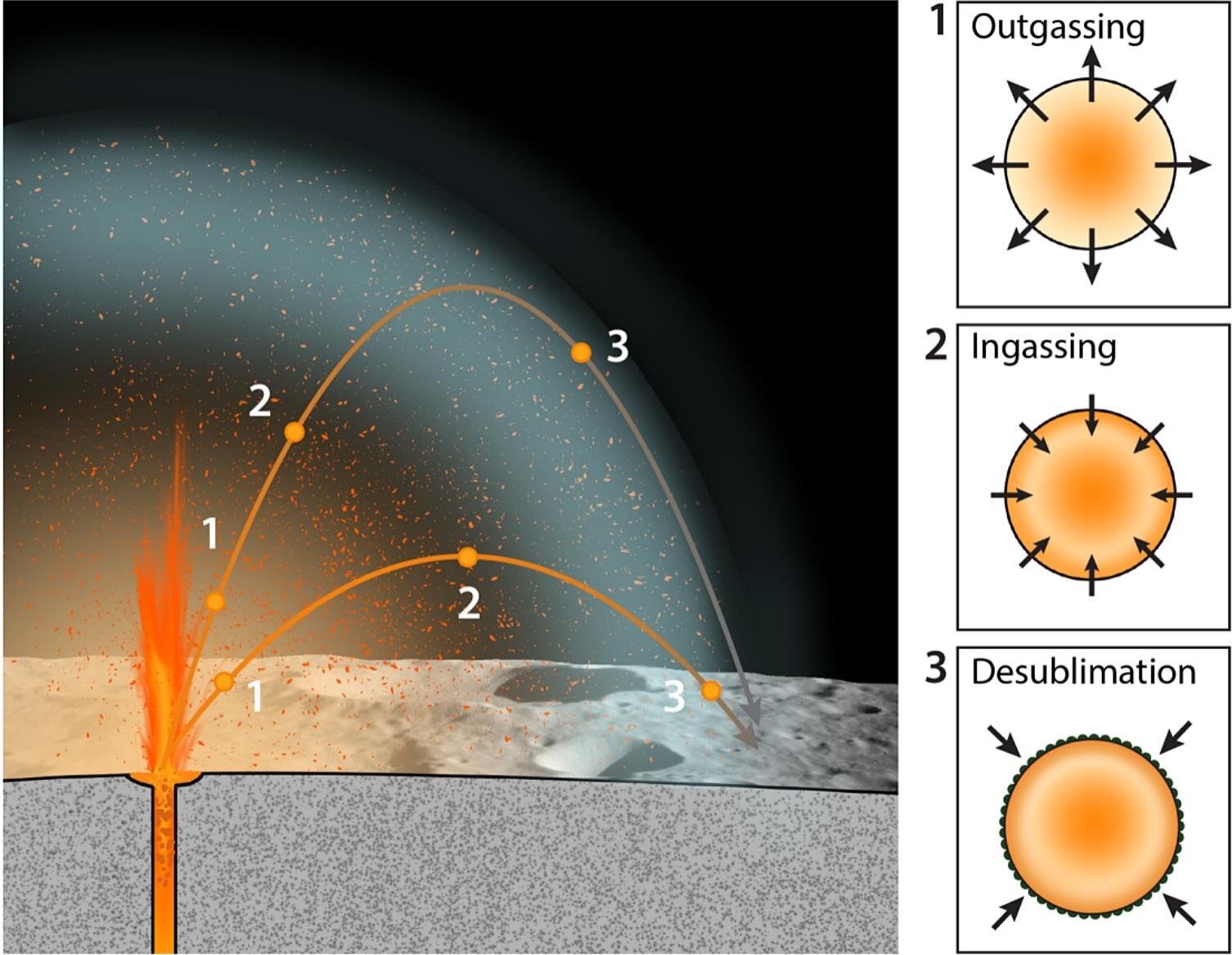Follow us on Google News (click on ☆)
The beads, measuring less than a millimeter (0.04 inches), were formed 3.3 to 3.6 billion years ago during volcanic eruptions. Ryan Ogliore, a professor at Washington University, highlights their importance as pristine samples of the Moon's interior. Modern techniques now allow for in-depth analysis of these artifacts.

Schematic diagram of a lunar volcanic eruption. Two trajectories of glass beads through the volcanic gas cloud are illustrated.
Credit: Icarus (2025). DOI: 10.1016/j.icarus.2025.116607
The study published in Icarus uses technologies like the NanoSIMS 50 to examine mineral deposits on the beads. These instruments, unimaginable during the Apollo era, reveal unprecedented details about ancient lunar volcanic conditions.
The lunar glass beads resulted from volcanic eruptions that ejected lava into space. As they rapidly cooled in the vacuum, these lava droplets formed glass spheres.
These eruptions, similar to lava fountains observable in Hawaii, occurred over 3 billion years ago. The beads thus captured information about the conditions of that time.
The beads' unique chemical composition, different from that of terrestrial rocks, helps scientists understand volcanic processes specific to the Moon. These discoveries enrich our knowledge of lunar geological history.

SEM images of surface features on black glass beads 74001.
Credit: Icarus (2025). DOI: 10.1016/j.icarus.2025.116607
To preserve their integrity, researchers extracted the beads from samples without exposure to Earth's air. The minerals and isotopic composition of the beads' surfaces reveal the evolution of lunar volcanic eruptions over time.